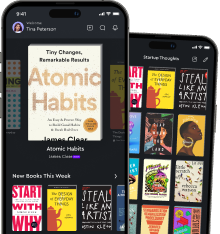Audio available in app
Nonverbal cues speak volumes from "summary" of Jogos de poder by Henrik Fexeus
Nonverbal cues are powerful communicators that often reveal more than words themselves. These cues can include facial expressions, body language, gestures, tone of voice, and even eye contact. While verbal communication is important, nonverbal cues play a crucial role in conveying emotions, intentions, and attitudes. In fact, research shows that a significant portion of our communication is nonverbal, making it essential to pay attention to these cues in any interaction. One of the reasons nonverbal cues are so impactful is that they are often unconscious. This means that even when we try to hide our true feelings or thoughts, our body language can give us away. For example, crossing our arms can signal defensiveness or resistance, while leaning in can indicate interest or engagement. By being aware of these nonverbal cues, we can better understand not only others but also ourselves. Nonverbal cues can also help us navigate social situations and power dynamics. For instance, maintaining eye contact can convey confidence and assertiveness, while avoiding eye contact can signal submission or discomfort. By observing these cues in others, we can adjust our own behavior to establish rapport, influence outcomes, and build stronger connections. In the realm of power games, nonverbal cues can be particularly revealing. Those who are skilled at reading and interpreting these cues have a significant advantage in understanding the dynamics at play and strategizing accordingly. By paying attention to subtle shifts in body language, tone, and facial expressions, one can gain valuable insights into the motivations and intentions of others.- Nonverbal cues are a critical aspect of communication that should not be overlooked. They provide valuable information about a person's emotions, thoughts, and intentions, helping us navigate social interactions, understand power dynamics, and ultimately communicate more effectively. By honing our ability to read and interpret these cues, we can become more skilled communicators and more adept at navigating the complex web of human interactions.

